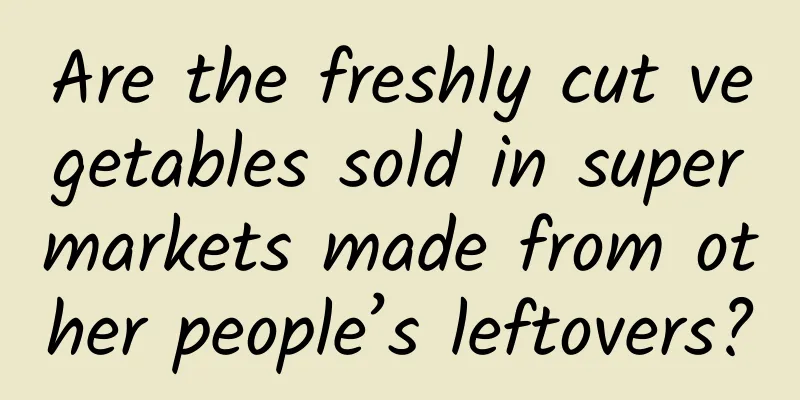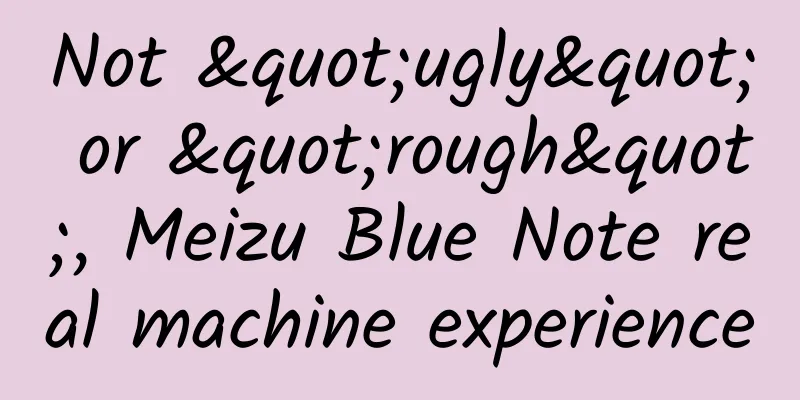Are the freshly cut vegetables sold in supermarkets made from other people’s leftovers?

|
For friends who need to cook, the most annoying things, besides washing dishes, are washing and picking vegetables. The vegetables we see in the market are often piled together with mud and leaves. After buying them home, they need a series of processes before they can be put into the pot. However, in many supermarkets, there are already washed, cut, and beautifully packaged (more expensive) vegetables that can be put into the dishes immediately after buying them home. These are the convenient choices for lazy people - clean vegetables. Wash and cut the vegetables, some are even matched | Tuchong Creative The so-called clean vegetables are fresh vegetables that are made from pollution-free vegetables and are processed, stored, transported and sold in a suitable low-temperature environment. They have a certain shelf life, are high-quality, hygienic and convenient . However, looking at the much more expensive clean vegetables than whole vegetables, you may have a lot of questions: Can the price of vegetables picked from the field be doubled by washing and cutting them? Are clean vegetables cut by old ladies using some rotten vegetable leaves? Will they not be fresh if they are sold after cutting? - Are consumers all being taken advantage of? ! Are the clean vegetables fresh? Freshness should be the most important issue for everyone. After all, the vegetables are washed and cut in the factory. By the time they are on the supermarket shelves, are they no longer fresh? In fact, strictly speaking, the moment it is cut, it is no longer fresh! This is determined by their original characteristics. Clean vegetables and fresh-cut vegetables are products that sacrifice some freshness in exchange for convenience. The moment the vegetables are cut, they are no longer fresh | ZCOOL However, there are also many measures to keep the vegetables fresh during production and packaging. For example, natural preservatives and sterilization and disinfection technologies are used on the production line to keep the vegetables fresh, depending on the type of vegetables and processing techniques. Packaging is the last checkpoint and is also very important for freshness preservation. At present, for fluffy leafy vegetables, factories generally choose modified atmosphere packaging (MAP) ; for pressure-resistant root and stem fresh-cut vegetables, they choose vacuum packaging (MVP) . There is also film-coated fresh-keeping packaging, which mainly functions to inhibit the respiration of vegetables and microbial infection. Vegetable salad packaged in modified atmosphere | ZCOOL Vacuum-packed vegetables | ZCOOL No matter what kind of preservation material is used, in the final analysis, its purpose is to maximize the freshness of the clean vegetables. Unfortunately, most vegetables are not suitable for freezing preservation due to their high water content and have a limited shelf life, otherwise they would not face the problems of oxidation and microbial proliferation. Are the clean vegetables the leftovers? Many people may wonder when looking at clean vegetables, are they the ones that are of poor quality and left over by others? For those half-rotten vegetables, do merchants pick out the remaining good parts and secretly make them into clean vegetables and sell them? This is not true! According to the existing national standards, the selection of raw materials for clean vegetables and fresh-cut vegetables is even more stringent than that for whole vegetables sold in the vegetable market. This is because the cleaning and cutting steps involved in the processing of clean vegetables are all carried out in the assembly line. If all vegetables are mixed together and there are rotten vegetables in it, the secondary contamination of microorganisms will cause more harm than good - for regular merchants, once the bacterial parameters exceed the standard, the products will not pass the inspection and cannot even be put on the shelves! Raw materials need to be screened | Sormac - Vegetable processing equipment / YouTube Moreover, the freshness management, pesticide residue detection, cold chain management , etc. of the raw materials during the supply process must comply with the relevant national food safety regulations. Therefore, from the perspective of pesticide residues, the raw materials of clean vegetables, let alone the leftovers from careful selection, may be safer than vegetables in traditional vegetable markets. In a processing plant that complies with the regulations, the cleanliness level of the workshop is far better than that of a home kitchen. Vegetables must be treated as "baby-grade" throughout the process of being made into clean vegetables before they can finally enter retail supermarkets. The cleanliness level in the workshop of a compliant processing plant is higher than that in your own kitchen | ZCOOL Of course, it does not mean that the processing of clean vegetables is 100% clean. After all, the cleaning and cutting of clean vegetables will always cause unavoidable human contact and physical damage, which will increase the risk of microbial infection and surface oxidation. The most common microorganisms in clean vegetables are mainly spoilage bacteria , including Escherichia coli and Pseudomonas, but generally no pathogenic bacteria. These spoilage bacteria will accelerate the softening and decay of clean vegetable tissues, greatly shortening the shelf life of clean vegetables. If the processing of clean vegetables is not regular, it may also lead to the growth of pathogenic bacteria. Escherichia coli is usually the most famous pathogenic bacteria, but in fact it also includes Shigella, Listeria, Salmonella and Yersinia. In the past few years, domestic and foreign institutions have also found excessive microorganisms in the sampling tests of clean vegetables. Avoid choosing clean vegetables without formal labels and preservation measures | ZCOOL It is impossible for us to detect microorganisms in real time. To avoid being "cheated", when buying clean vegetables, we must choose brand processing factories and merchants with high credibility . Many merchants have also launched traceability systems . When buying clean vegetables, we can check their "identity cards" and know which farms they entered the supermarkets from, which makes people feel more at ease. The clean vegetables are not cut by grandma! The last question: Why are clean vegetables so expensive? They are just washed and cut, why do they charge so much? In fact, the processing of clean vegetables is not just a simple cleaning and sorting! It not only requires the traditional storage and preservation technology of intact fruits and vegetables, but also the pre-processing technology of vegetable processing. The processing technology of clean vegetables includes a complex set of processes : grading and selection → cleaning → sorting → cutting → preservation → dehydration → sterilization → packaging → refrigeration. These processes involve more equipment than you can imagine: soaking tanks, blower cleaning machines, spray tanks, sand rod filters, cutters, centrifugal dehydrators, ultraviolet sterilizers, vacuum packaging machines, and cold storage rooms. The equipment process flow chart looks like this, with many processes and is very complicated! | References [3] With so many professional equipment, does it mean that human involvement is no longer needed? Not really. Humans are still involved in the vegetable grading and selection process. At this stage, workers manually grade and select vegetables in the soaking tank, sorting the products into different grades according to the specifications, and perform preliminary cleaning to remove some debris, yellow leaves, etc. The subsequent cleaning and cutting processes are handed over to professional machines. This manual selection process is not something that everyone can do. In order to ensure the cleanliness and hygiene of food, in addition to regular physical examinations every year, employees in the production workshop also have strict dress requirements . The tight work clothes worn by the workers can be used to protect the products from possible contamination from the human body. The correct way to wear work clothes (usually gloves are also worn) Neatly dressed assembly line workers | Sormac - Vegetable processing equipment / YouTube In short, although the freshness of clean vegetables produced by formal processes is sacrificed, it is convenient for the fast-paced urban life and is a boon for people who don’t have time to wash and cut vegetables themselves. Moreover, because the stems and roots have been removed, the edible proportion of clean vegetables is generally greater than 90%, which can reduce the generation of kitchen waste and contribute to environmental protection. The clean vegetable industry chain is also becoming increasingly powerful under the joint supervision of agricultural and trade-related regulatory departments, allowing us to eat vegetables with peace of mind. For freshness, buy whole vegetables, unwashed and uncut. | Raysonho / Wikimedia Commons However, if what you care most about is the freshness of the vegetables and want to eat the freshest and most tender vegetables, we still encourage you to buy whole vegetables - no matter how safe and convenient clean vegetables are, they have already been processed and ravaged, so how can they be as fresh as whole vegetables! References [1] Zhang Ruiyu. Key technologies for clean vegetable processing and quality control[J]. Agricultural Science and Technology Newsletter, 2003(08):36-37. [2] Liu Jianan, Li Anping. Research on processing technology and production line of clean vegetables[J]. Jiangsu Agricultural Machinery and Agronomy, 2001(04):20-21. [3] Wang Yunyang, Yue Tianli, Yang Kang, Zhang Li. Preliminary study on the design of a factory with an annual output of 10,000 tons of clean vegetables[J]. Chinese Agricultural Science Bulletin, 2006(03):413-417. [4] SB/T 10583-2011 Technical requirements for processing and distribution of clean vegetables [5] NY/T 1529-2007 Fresh-cut Vegetable Products Author: Yuzuki Su, Monica Edit: Cat Tun Title image source: Tuchong Creative This article comes from the Species Calendar, welcome to forward If you need to reprint, please contact [email protected] |
Recommend
IBM unveils 50-qubit computer Q, which beats all traditional computers
In many movies and TV series, characters named Q a...
Analyze the algorithm mechanism behind Tik Tok!
Understanding the platform rules is the key to pl...
How should bidding promotion be optimized to be effective?
How to optimize Baidu SEM company's bidding p...
Why does the watermelon in the refrigerator smell like leeks?
The refrigerator is a weird place. A half-eaten w...
Fun fact: What other uses do pigs have besides providing meat for humans?
Pigs are the most common livestock among all live...
How to attract 100,000 users through H5?
Attracting new users to an APP has always been a ...
Why SwiftUI views use structs
[[414187]] This article is reprinted from the WeC...
Bidding account adjustment and optimization, the pitfalls most SEMers will fall into!
1. Establish a comprehensive data monitoring syst...
"Health from eating" series | National Nutrition Week: @The elderly around you, this dietary advice is very important
Recently, a review article published in the Briti...
German Federal Motor Transport Authority: Tesla sold only 1,429 new cars in Germany in February 2025, a year-on-year drop of 76%
The latest data shows that Tesla is experiencing ...
Use these 6 tricks to create a fission activity with over 100,000 followers!
When we are doing various marketing fission activ...
How to build a Baidu bidding promotion account structure and create a Baidu bidding account?
Friends who do SEM know that account building in ...
Can smelly socks indicate lung infection? There are more things you can’t smell in life than just stinky socks!
Recently, a netizen shared his experience of gett...
It can save lives at critical moments, and disaster prevention emergency kits also have national standards!
It can save lives at critical moments, and disast...
Million-dollar anchor operation employment class
Newcomer's debut, complete program for amateu...









